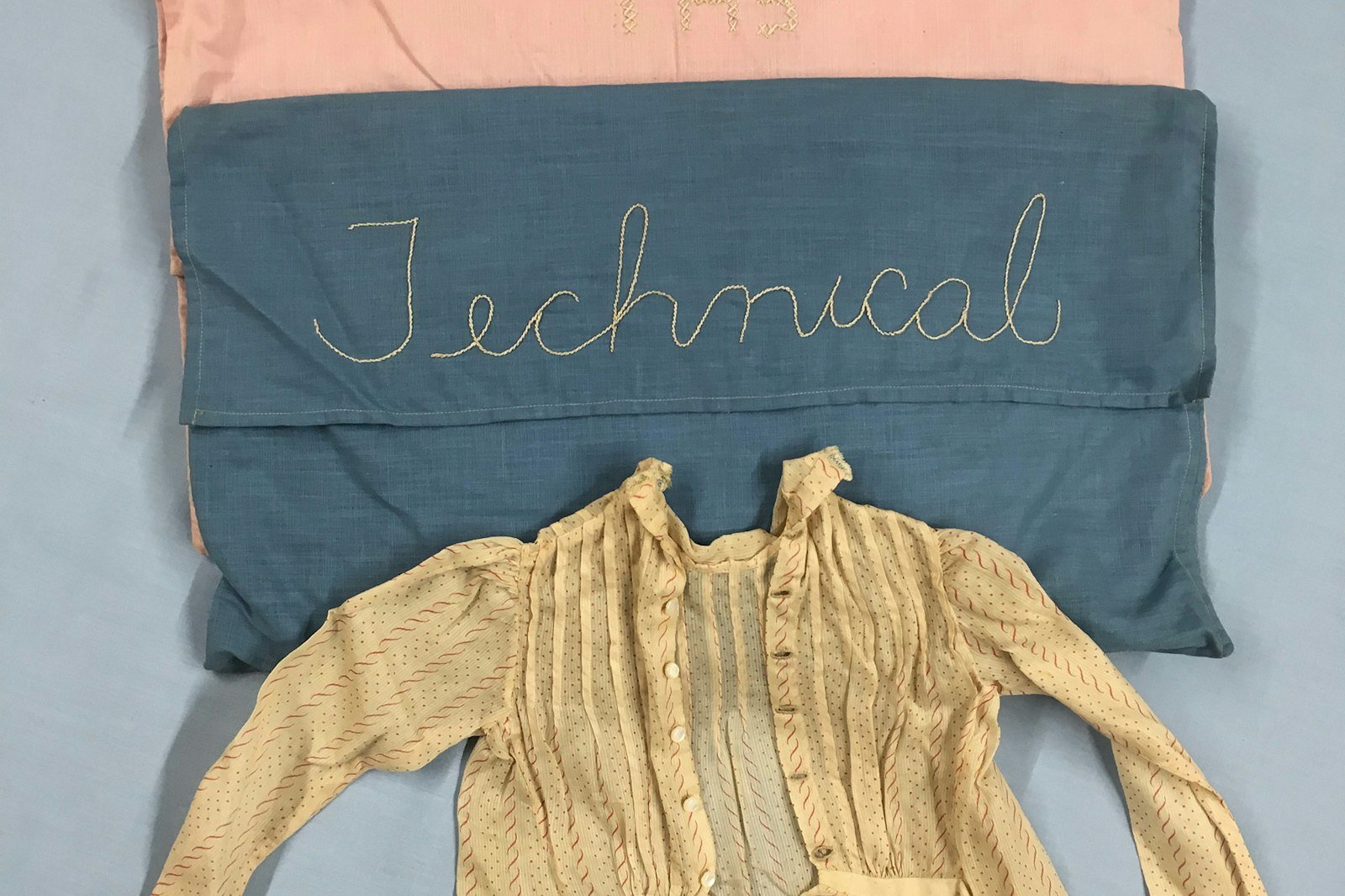Domestic skills such as cooking, mending, and sewing were passed down generationally until the 19th century, when grants to institutions moved the teaching of these skills to the classroom. Read more to learn about this shift from the home to the school and how this change affected the economy.
Home Economics
Home Economics was once considered important for all girls to study. I took “Home Ec” in junior high school, back in the late 1960s when the dress code required girls to wear skirts. The boys took shop. In a classroom complete with sinks, stoves, and sewing machines, I learned to dry a kitchen sink after every use, sew a pair of wool plaid pants, and on one occasion I ponder to this day, we listened to a guest explain how she never washed her face. She instead used cold cream to prevent wrinkles. But the 1960s were a time of many social changes.
Changing Times
With the post-World War II economic boom came the modern consumer culture. The price of clothing dropped as factories moved to areas with lower labor costs within the United States. Women began careers outside of the home. I arrived at a high school with no dress code; I was free to wear blue jeans. The hallway down which classrooms contained kitchens and desks with typewriters saw little traffic. Both genders could take the shop and auto-mechanics classes provided by the school.
Students’ work from the Collection of the University of Rhode Island
When Domestic Skills Moved to the Classroom
The rise of home economics as a class taught in public schools began in the 19th century, when what was once learned at home began to pass by the wayside. The Industrial Revolution produced devices to save time and money, sparing women the drudgery of making or repairing the family clothes. New department stores stood ready to offer whatever was wanted. Women’s roles changed as well; young women entered the workforce as secretaries, telephone operators, and shop clerks. Magazines focused on making objects to beautify the home, not clothe the family. Household management, like so many other aspects of life, was codified and viewed as a science. Fannie Merritt Farmer (1857–1915) introduced the concept of standardized measurements with the publication of The Boston Cooking-School Cook Book in 1896. The Morrill Act of 1862, which created land-grant institutions such as the University of Rhode Island (URI), was expanded in 1890 to help colleges focused on teaching agriculture, science, and engineering. URI offered the first classes in home economics to women in 1909.
Economic Effect
At the same time, women were expected to provide for the family through sewing and could use sewing to save money and, as some social historians suggest, balance the economic influence in a family. Sarah A. Gordon, in Make it Yourself: Home Sewing, Gender and Culture 1890–1930, points out that sewing clothes at home remained a common activity through the 1920s, facilitated by the availability of sewing machines, paper patterns, and inexpensive fabrics. Mary Brooks Picken (1886–1981) founded the Women’s Institute for Domestic Arts and Science in 1916, “for the purpose of making a practical knowledge of the domestic arts and sciences available to every woman or girl, wherever she may live.” The art of homemaking was no longer to be passed from generation to generation but taught in schools and through correspondence courses until these, too, were no longer necessary.
Sample booklets by Esther W. Tripp.
Sample Book Collections
Sewing sample books donated to the Historic Textile and Costume Collection (HTCC), at URI, illustrate this shift from sewing taught at home to sewing taught in school. We know that private schools in the 1700s and 1800s taught sewing, embroidery, and other fancy work to their students, primarily those from wealthy families. By 1900, what was once taught at home was being provided by the public-school system. Lucy H. Pierce, who taught at the Providence Technical High School around 1910, donated a collection of her own samples and books to URI. The HTCC houses a number of sample books, which can also be found in universities, many of them land-grant institutions, such as Cornell University, across the United States.
Is society moving back to teaching domestic skills at home instead of the classroom? Now, in the 21st century, both women and men are taking up mending and sewing for many reasons. The fight against fast fashion, thoughts for the planet and sustainability, and the scientifically proven mental health benefits of working with your hands. Perhaps in another 100 or even fewer years these skills will again be taught at home and people will wonder at the items made.
Interested in learning more about sample books? Check out the Summer 2025 samplers issue of PieceWork.
Also, remember that if you are an active subscriber to PieceWork magazine, you have unlimited access to previous issues, including Summer 2025. See our help center for the step-by-step process on how to access them.
Resources
- Cornell University has an excellent website on the history of home economics. It can be accessed through the university site or at http://hearth.library.cornell.edu.
- Gordon, Sarah A. Make it Yourself: Home Sewing, Gender and Culture 1890–1930. New York: Columbia University Press, 2009.
Susan J. Jerome is collections manager at the University of Rhode Island Historic Textile and Costume Collection. She earned her MS degree from the University of Rhode Island, Department of Textiles, Fashion Merchandising, and Design. Prior to continuing her education, she worked for a number of years at Mystic Seaport Museum. She lectures on topics of fashion history and needlecraft; works as a textile and quilt conservator; and is a consultant to museums and historical societies. An avid textile enthusiast, she is happiest when writing, talking, and doing all things textile.
Originally published May 11, 2020; updated August 4, 2025.





